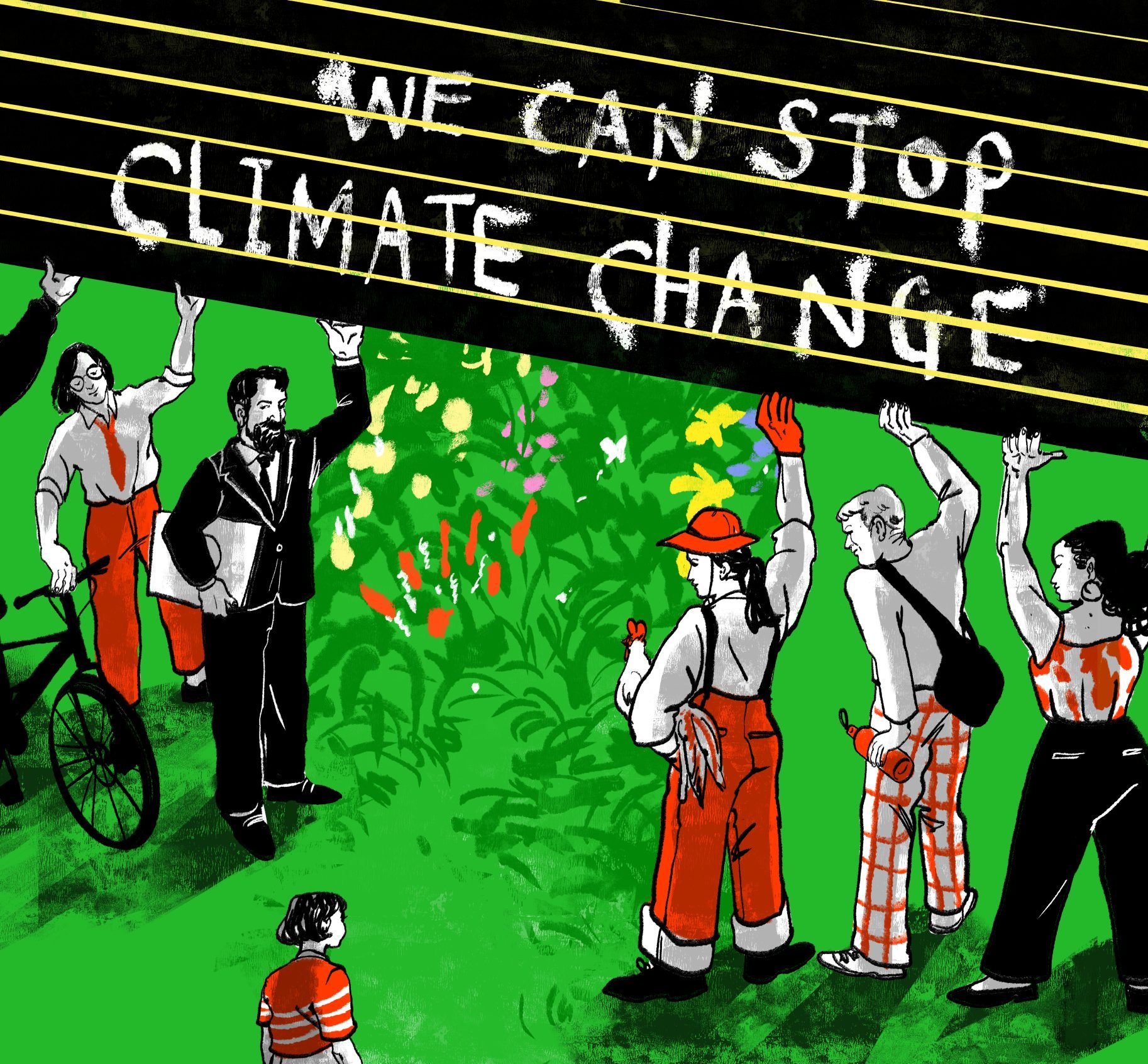© Min Jeong Lee (Eomju) for ArtistsForClimate.org, thegreats.co

The Inter-American Court evaluates Escazú Agreement's protection for environmental defenders
The Inter-American Court of Human Rights examines the Escazú Agreement's role in safeguarding environmental defenders, a landmark move for climate justice and human rights.
The Advisory Opinion, which has already garnered a record number of interventions – over 250, a record in the history of the court – will mark a rare instance in which the Court will analyse a treaty that is not part of the Inter-American System, but of the Economic Commission for Latin America and the Caribbean: the ‘Regional Agreement on Access to Information, Public Participation and Justice in Environmental Matters in Latin America and the Caribbean’, also known as the ‘Escazú Agreement‘.
The Escazú Agreement is the first regional environmental treaty in Latin America and the Caribbean. There are currently 15 State parties to the treaty, out of 33 possible ones. It is also the first and only treaty in the world to explicitly mention human rights defenders, establishing obligations towards environmental human rights defenders, specifically.
Latin America is simultaneously one of the areas that are most vulnerable to climate change and the most dangerous region in the world to be an environmental defender, making this a timely treaty in order to support both climate action and offer activists better protections.
In order to support the protection of environmental defenders, ISHR filed an intervention on environmental defenders, in collaboration with CIEL, FARN, and other international, regional and national organisations and human rights experts.
The obligation to effectively protect environmental human rights defenders
The Inter-American Court of Human Rights has already recognised that States are obliged to protect human rights defenders, arising from the general obligations to protect the rights to life and integrity of the person, among others. However, the Court has yet to expressly establish whether protecting environmental defenders is an obligation that also derives from environmental commitments made by States, as these stakeholders are an indispensable partner in the fight against climate change.
This is an opportunity for the Court to recognise that, in order to guarantee the right to a clean, healthy and sustainable environment, States must protect environmental defenders, as violating their rights also violates the rights they are defending.
The Court is also called to elaborate upon the specific protection needs of Indigenous, women and youth defenders. These groups face particular forms of attacks which must be addressed with cultural and gender perspectives, taking into account not only the particularities of the attacks they suffer, but also of their needs and desires.
In the case of Indigenous groups, the existing jurisprudence of the Court on recognising collective rights, along with the language used in article 9 of the Escazú Agreement – which establishes that ‘persons, groups and organisations’ can defend human rights – provides an opportunity to firmly establish the existence of a collective right to defend human rights, as well as the State’s obligation to set up and adapt their protection measures and mechanisms to ensure that collective protection is available when needed.
Environmental defenders and ‘access rights’
While the express mention of environmental defenders in the Escazú Agreement is extremely important, it is not its main focus. The treaty contains several obligations for States to guarantee access to information, to decision-making spaces and to justice in environmental matters.
These ‘access rights’ are applicable to all persons, but the Inter-American Court must reaffirm and elaborate upon its own jurisprudence related to their applicability for environmental defenders, which states that: ‘defenders cannot properly defend environmental rights if they cannot exercise their own rights of access to information, freedom of expression, assembly and peaceful association, guarantees of non-discrimination and participation in decision-making‘.
This is also an opportunity for the Court to clearly assert that private actors are also under the obligation to respect these rights, which includes conducting meaningful consultations and ensuring the free, prior and informed consent of communities affected by their projects.
The extent of the Advisory Opinion
Latin America is the region with the most and the oldest laws and protection mechanisms regarding human rights defenders, so it was only logical that it would be the first region to adopt the first treaty that expressly protects them.
The Inter-American Court has also been a pioneer in this regard. It was the first regional human rights court to deal with human rights defenders’ cases and order structural reforms to better protect them.
These successes must be celebrated, but there is still work to be done. The coming years will see an increase in three areas, all linked with one another: climate crisis, the amount of environmental defenders, and the risks faced by defenders.
The Court must seize this opportunity and set an example for countries in the region and beyond on how to properly defend the rights of those that defend our rights.
See the intervention here:
